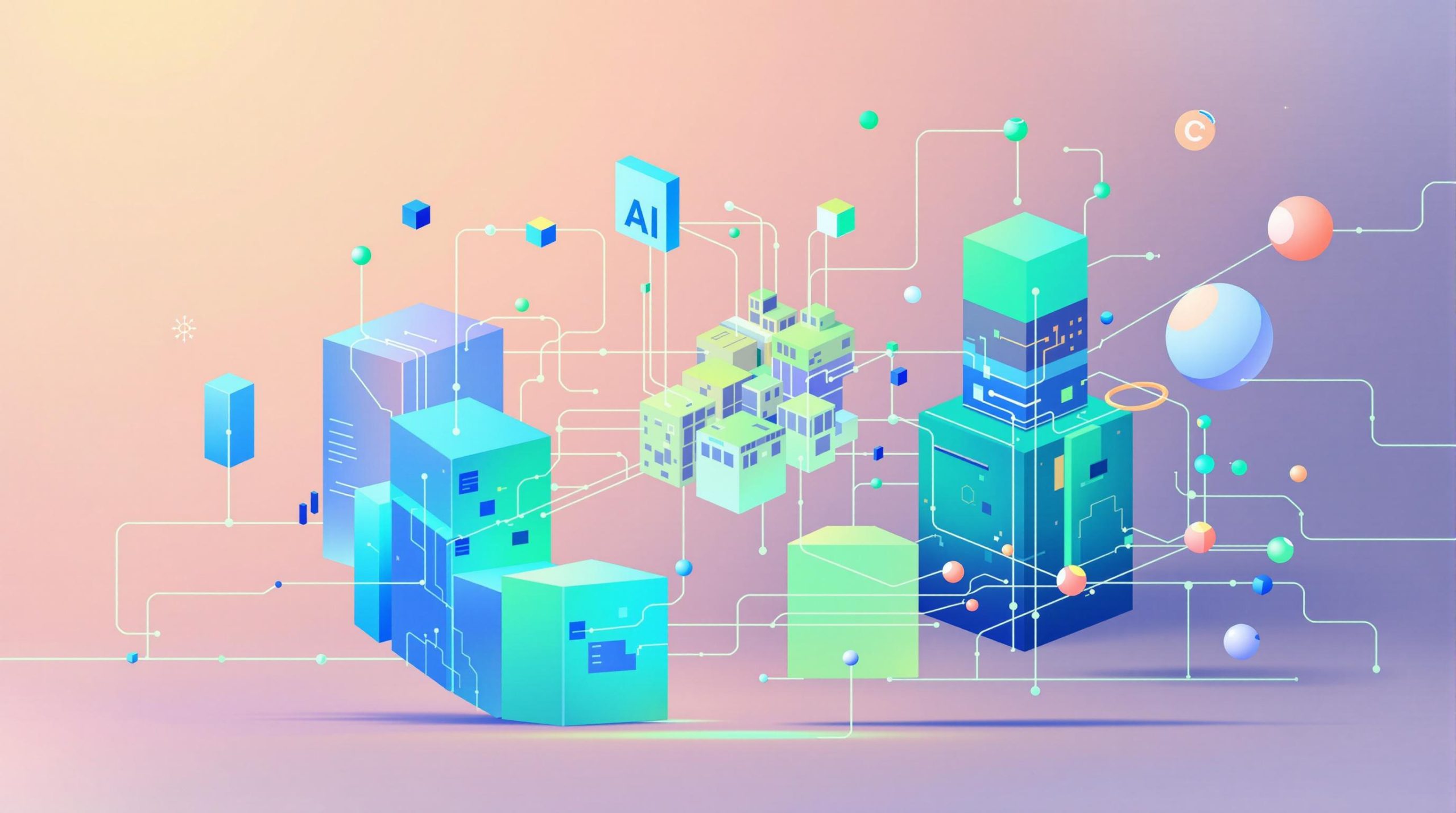Agentic AI is transforming how AI systems make decisions, and OpenAI leads the way. Their proprietary Deep Research framework scores 67.36% on the GAIA benchmark. Hugging Face‘s OpenResearch, released a few days after, scores 54%.
Key Takeaways:
- OpenAI’s Deep Research: High performance with advanced web interaction and tool usage.
- Open Source Progress: Hugging Face and others closing the gap with rapid improvements in code agents and multimodal tasks.
- Challenges: Both sides face hurdles in AI alignment, multimodal processing, and resource demands.
| Aspect | OpenAI Deep Research | Open Source Solutions |
|---|---|---|
| GAIA Validation Score | 67.36% | 54% |
| Cost | $200/month | Free, self-hosted |
| Customization | Limited | Full access to code |
The future of agentic AI lies in balancing performance, cost, and customization, with open-source options evolving rapidly to compete with proprietary systems.
OpenAI Launches Deep Research Agent
OpenAI’s Deep Research Tools
Technical Features
OpenAI’s Deep Research framework pushes the boundaries of agentic AI by blending a powerful language model with an advanced framework for precise tool use and step-by-step task handling. Instead of relying on JSON for actions, it utilizes code, streamlining operations for better efficiency and clarity [1].
A key strength of this architecture lies in its state management, which is essential for handling multimodal tasks. By reducing the number of steps required for complex operations, the system boosts both performance and cost-effectiveness. This makes it particularly suited for tackling intricate, real-world challenges [1].
Current Use Cases
Deep Research is especially effective in areas like multimodal analysis, web navigation, and integrating various tools. It has proven its worth by achieving a 47.6% accuracy rate on level 3 questions, which involve complex reasoning, and by automating tasks such as content summarization [1]. Its ability to handle multi-step processes makes it a go-to solution for tasks that demand deep reasoning and interaction with multiple tools [1].
These examples showcase how the framework is already making an impact in practical applications, backed by its strong performance metrics.
Performance Data
When it comes to tackling complex reasoning tasks, the framework stands out with a 47.6% success rate on level 3 questions. These tasks require multiple steps of reasoning and advanced tool usage, areas where earlier AI systems often struggled [1].
This success is largely due to its refined methods for web browsing and state management. By optimizing how it handles intricate tasks, the system delivers accurate results while working more efficiently [1].
Open Source Solutions
Leading Open Projects
Hugging Face is at the forefront of developing open Deep Research, with contributions from a wide network of developers working on areas like data indexing, web browsing, and integrating large language models (LLMs). Collaborative efforts from groups such as Jina AI and mshumer have played a crucial role in improving core functionalities, including tool integration and state management [1].
Feature Comparison
Here’s a quick look at how OpenAI’s Deep Research stacks up against open-source solutions in key areas like GAIA performance and tool integration:
| Feature Area | OpenAI Deep Research | Open Source Solutions |
|---|---|---|
| GAIA Validation Performance | 67.36% | 54% |
| Web Browser Interaction | Advanced Operator | Basic capabilities |
| Code Agent Implementation | Full integration | Partial implementation |
| Tool Usage Framework | Comprehensive | In development |
OpenAI still leads in areas like advanced web interaction and tool frameworks. However, open-source platforms are making rapid progress, especially in code agent implementation [1].
Recent Progress
The open-source community has made impressive strides, with Hugging Face reaching 54% on the GAIA validation set – a major improvement from earlier benchmarks. Advances in code agent implementation have been particularly noteworthy, showing a 60-point performance boost compared to older JSON-based agents [1].
Current efforts are aimed at enhancing vision-based web browsers and improving file handling capabilities. Developers are also working on creating more advanced toolsets and streamlining multi-step operations. While these developments demonstrate the open-source community’s ability to push boundaries, there’s still work to be done to match proprietary systems’ performance [1].
sbb-itb-5392f3d
Development Challenges
Main Technical Barriers
Aligning AI actions with human intent and managing reasoning chains remain tough problems. These tasks require a lot of computing power to ensure accuracy and dependability. Most tools rely heavily on text-based inputs, which limits their ability to work with multiple formats or handle complex interactions. While OpenAI’s Operator tool shows potential, both proprietary and open-source solutions face similar hurdles [1].
Here’s a quick look at the main challenges and their impact:
| Challenge Area | Impact on Development | Current State |
|---|---|---|
| AI Alignment | Requires advanced mechanisms | Partially addressed but costly |
| Multimodal Processing | Limited to specific formats | Text-based tools are still dominant |
| Tool Integration | Needs complex implementation | Ranges from basic to advanced |
| Computing Resources | Demands high-performance infrastructure | A major obstacle for open-source work |
These difficulties have driven the search for better solutions in areas like alignment, multimodal capabilities, and tool integration.
Technical Solutions
Code-native agents, such as those developed in smolagents, are proving more efficient than traditional JSON-based methods. These agents simplify workflows and improve performance. Developers are also working on improving web browser interactions and file-handling features to overcome tool integration issues. The open-source community has made great strides by creating frameworks that let large language models (LLMs) execute code-based actions, reducing complexity and boosting overall functionality [1].
Efforts are now focused on building tools that are easier to use and more adaptable. While proprietary systems like OpenAI’s Deep Research continue to lead in advanced features, open-source alternatives are catching up quickly. Solving these challenges will not only enhance proprietary platforms but also speed up the growth of competitive open-source options [1].
Future Development
Open Source Development Path
The open source community is making strides toward matching proprietary solutions. Hugging Face’s 54% score on the GAIA validation set is a clear example of this progress. Current efforts are focused on improving browser interaction, multimodal processing, and tool integration. These developments are expected to bring major advancements by late 2025, paving the way for new possibilities in agentic AI technologies.
New Technologies
New tools like vision-based web browsers, integrated tools, and improved file management are pushing agentic AI to new levels. These advancements allow for smoother interactions and better data handling. Code-native agents, for instance, are already outperforming older JSON-based systems, signaling a shift in AI framework design [1]. These updates are starting to reshape industries, encouraging faster adoption and progress.
Industry Effects
"The future of software development is inextricably linked to AI."
The rise of agentic AI is changing how software is developed. Over the past year, organizational AI usage has grown from 23% to 39% [1]. Advances in areas like browser interaction and tool integration are driving change in industries such as healthcare (for complex diagnostic tools), finance (through automated reporting and analysis), and education (with personalized learning systems). Big shifts are anticipated by 2026 as these technologies become more widespread.
Summary
Main Points
The gap in performance between proprietary and open-source agentic AI frameworks is narrowing. OpenAI’s Deep Research has set a new benchmark with a 67.36% score on the GAIA validation set. Meanwhile, open-source alternatives have reached 54%, showcasing steady progress in community-driven development.
Deep Research combines large language models (LLMs) with agentic frameworks to enable advanced tool usage and web interactions. While the exact implementation details are proprietary, this integration has been key to its high performance. On the other hand, open-source projects are rapidly evolving, with developers working together to replicate and refine these capabilities. This trend highlights how open-source frameworks are becoming more competitive in the AI landscape.
These advancements provide organizations and developers with actionable insights into adopting and optimizing agentic AI frameworks.
Next Steps
For those considering agentic AI frameworks, the decision between proprietary and open-source options depends on specific requirements, such as budget, performance needs, and customization preferences:
| Aspect | OpenAI Solution | Open Source Alternative |
|---|---|---|
| Cost | $200/month subscription | Free, self-hosted |
| Performance | 67.36% GAIA score | 54% GAIA score |
| Customization | Limited | Full access to code |
Developers can contribute to open-source projects like the smolagents repository to improve browser interaction, multimodal processing, and tool integration. For organizations focused on data privacy, deploying open-source solutions like DeepSeek-R1 locally can help meet compliance standards such as GDPR or HIPAA.

